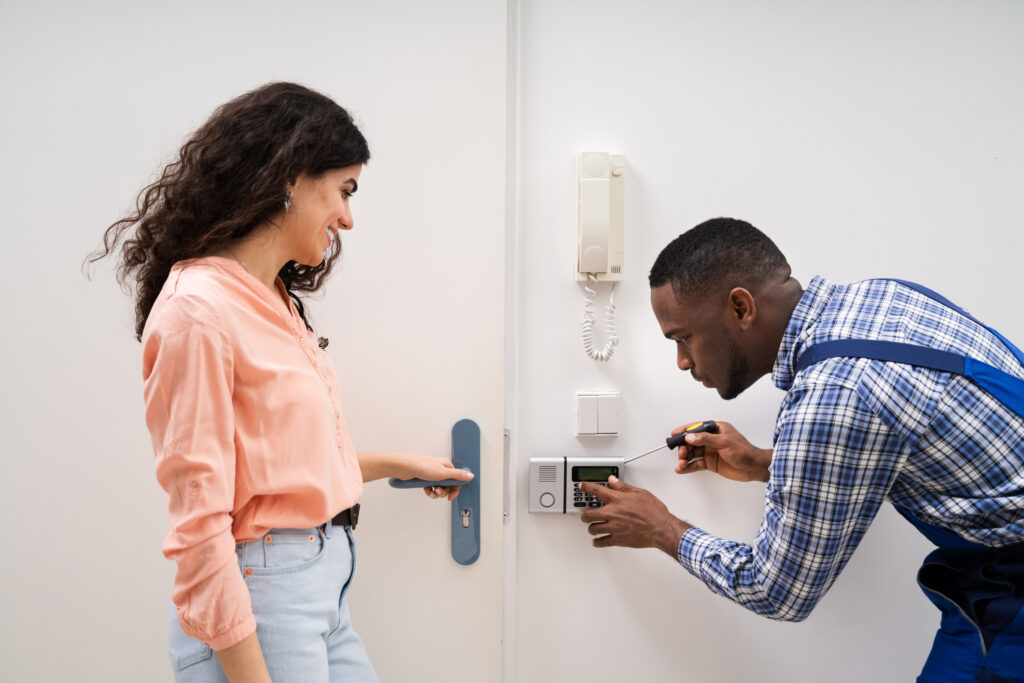Tips for Maintaining Your Smart Lock
A smart lock blends mechanical parts with electronics, software, and connectivity. When it is maintained with care, it provides smooth daily access, reliable auto locking, clear audit history, and fewer emergencies. This guide covers practical steps that keep a smart lock healthy: batteries and power, door alignment, firmware, network setup, user code habits, privacy, and seasonal checks. The goal is a confident twist of the thumbturn every time you arrive and a calm exit when you leave.
Start With Foundations: Mounting and Door Mechanics
Most smart lock problems trace back to door alignment rather than electronics. Before you tweak settings, make sure the door closes freely and the bolt throws without rubbing. A lock motor is not meant to force a stuck bolt. Tighten hinge screws, adjust the strike plate, and verify that the deadbolt extends its full throw into solid framing. If you hear the motor strain or see the bolt stop short, reduce friction first. A well aligned opening reduces battery drain and extends the life of gears and drivers.
Check cylinder tailpiece length and orientation during installation. A tailpiece that binds or a misaligned adapter can cause intermittent failures. Verify that the interior escutcheon sits flush without twisting the door skin. If your door is metal or glass clad, use the correct mounting plate and gaskets so the housing remains rigid and weather resistant.
Power and Batteries: Keep the Heart Beating
Use Fresh, Matched Cells
Install new, name brand batteries from the same lot. Mixing old and new cells causes voltage drop under load. If your lock supports rechargeable packs, follow the maker’s schedule and keep a charged spare.
Avoid Alkaline Leaks
Inspect the compartment quarterly. If you see white residue or corrosion, replace cells and clean contacts with a cotton swab and a small amount of contact cleaner. Do not bend spring contacts.
Mind Cold and Heat
Batteries sag in cold weather and degrade faster in heat. In winter, ensure the bolt path is smooth so the motor draws less current. In summer, shield the interior escutcheon from direct sun when possible.
Set Predictable Swaps
Replace batteries on a calendar rather than waiting for warnings. A simple rule like the first week of spring and fall prevents late night failures.
Learn the Low Power Mode
Many smart locks allow temporary power with a 9V touch pad or a USB pack from the outside. Practice this once so you know the exact contact points.
Calibrate, Clean, and Protect the Hardware
Run the lock’s calibration procedure any time you adjust the strike, move hinges, or update firmware that affects motor behavior. Calibration teaches the device where the bolt should stop and reduces false jam alerts. Keep the bolt face clean and lightly buff any burrs with a non abrasive pad. Do not spray household oils into cylinders or onto the bolt; use a lock safe dry lubricant sparingly if needed.
For keypads, wipe the surface with a soft cloth. Avoid harsh chemicals that haze coatings or leave residues that collect dirt. If the keypad uses capacitive sensing, moisture can cause ghost touches. A quick dry wipe usually restores normal function. Replace weather gaskets that have cracked or flattened, especially on doors that take direct rain.
Firmware, Apps, and Integrations
Update on Purpose
Keep firmware current, but schedule updates when you are home. After an update, test lock, unlock, and auto lock to confirm behavior before you rely on it.
Use App MFA
Require multi factor authentication for the account that controls your lock. If you add a new phone, remove the old device from trusted status.
Review Integrations
Connect only what you use. If a voice assistant is enabled, require a PIN for unlock. Remove unused services to reduce complexity and conserve battery.
Backup Access
Keep a physical key or alternate entry method available. Test the mechanical override twice a year to ensure the cylinder turns smoothly.
Export Your Audit Log
Some platforms allow log export. Save a periodic snapshot so you can compare behavior before and after changes or troubleshoot odd events.
Network and Signal Health
Smart locks rely on Bluetooth, Wi-Fi, Zigbee, Z Wave, Thread, or a proprietary bridge. Each has different range and battery demands. If connectivity drops or latency grows, check signal strength at the door. Move the hub or bridge closer and avoid placing it behind metal cabinets or near dense masonry. For Wi-Fi locks, choose a stable 2.4 GHz network name that does not change and reserve an IP in your router so the device does not hop addresses during power blips.
If your door is metal clad, radio signals can reflect or weaken. A small relocation of the bridge, even a few feet, can restore reliable operation. When you change routers, add the new network to the lock while the old network is still available so the device can migrate gracefully.
User Codes, E Keys, and Guest Access
Use Unique Codes
Assign a distinct code per person. Avoid birthdays and simple sequences. Change contractor and cleaner codes on a schedule and use expiring access when possible.
Name With a Convention
Adopt a simple format like Family FirstName or Vendor Company. Consistent naming keeps the list readable months later.
Lockout Policies
Set limits on consecutive failed attempts before a temporary keypad lockout. This deters casual probing and prevents battery drain from repeated tries.
Rotate Periodically
Rotate regular user codes a few times a year. Update any written lists stored in a safe place and remove codes for guests who no longer need access.
Share Access Securely
When sending an e key, use in app sharing rather than screenshots. Confirm the recipient’s email or phone before granting rights.
Daily Use Settings That Protect Battery and Reliability
Auto lock is convenient, but only if the door seals cleanly. If your door sometimes rebounds, lengthen the auto lock delay so the latch settles before the motor throws the bolt. Disable constant status pings from the lock to the app if your platform allows it; periodic checks are enough for most homes and conserve power.
Calibrate geofencing routines carefully. Use a modest radius and require your phone to connect to a known network before automations fire. This avoids accidental unlocks when you drive past the house. If you share the home, make sure only the right devices can trigger arrival or departure events.
Seasonal Maintenance Checklist
Spring
Inspect weatherstrips, replace keypad batteries if used separately, and run a calibration. Confirm auto lock timing after humidity changes.
Summer
Check sun exposure on the keypad and lens if there is an integrated camera. Add a small shade or adjust positioning to reduce heat load.
Fall
Tighten hinge screws, verify strike depth, and clean the bolt path. Prepare for colder air that can stiffen seals and increase motor load.
Winter
Replace batteries proactively, ensure the door closes without forcing the bolt through swollen wood, and keep the keypad dry after snow or freezing rain.
Privacy and Data Practices
Treat your lock account like online banking. Use a unique password in a manager and enable multi factor authentication. Review which household members can administer users and restrict full control to the few who need it. If the lock uploads images or logs, learn how long data is retained and how to delete it. When selling or renting your home, perform a full factory reset and remove the device from your account so the next owner can enroll it cleanly.
If you use a camera at the entry, aim it to capture approach rather than the entire interior. This balances awareness with privacy. Let guests know that a smart lock is in use and provide clear instructions for codes and exit procedures.
Troubleshooting: Quick Fixes For Common Symptoms
Motor Sounds Strained
Check door alignment and strike plate first. If the mechanical path is smooth, replace batteries with a fresh matched set and recalibrate.
Random Offline Alerts
Move the bridge closer, reserve an IP, or reduce Wi-Fi congestion on the 2.4 GHz band. Verify that your router is not blocking the cloud service.
Codes Not Working
Confirm keypad mode, check for a temporary lockout after failed attempts, and ensure the code is still active with correct schedule windows.
Auto Lock Misses
Extend the delay, recalibrate, and ensure the door settles fully. Inspect the latch plate for rub marks and adjust until the bolt throws cleanly.
Geofence Opens Too Early
Reduce the radius and require device presence on home Wi-Fi before unlock routines run. Remove old phones from authorized devices.
Special Situations: Rentals, Roommates, and Small Businesses
For short term rentals, use guest schedules and unique codes per booking. Automate code creation and expiration where the platform allows it. Keep a binder with a simple quick start page for guests and a separate admin note for cleaners. For roommates, create individual codes and a shared rule for reporting low battery warnings. For small offices, pair the smart lock with a closer sized to the door so the latch engages every time, then enable an audit log to resolve access questions without guesswork.
If the property relies on restricted mechanical keys for back entries or gates, maintain a key issue log alongside the smart lock user list. Consistency across systems prevents confusion during staffing changes.
Care, Cleaning, and Finish Longevity
Wipe the exterior trim with a damp microfiber cloth and dry immediately. Avoid abrasive pads and chemical cleaners that can dull protective coatings. If your finish shows early wear from sun or salt air, apply the manufacturer recommended protectant. Indoors, keep the interior housing free of dust so buttons and sensors remain responsive. Do not over tighten set screws on levers; a slight back off after snugging prevents binding during temperature shifts.
Build a Backup Plan
Even well maintained systems can run into surprises. Keep a physical key with a trusted neighbor or in a safe at home. Store a spare battery and a short cable in a small pouch near the entry. Save a local locksmith contact and note where the mechanical cylinder is hidden if your model uses a cover. Write a two line checklist for family members that covers how to use emergency power and how to reach support if the app is unavailable.
Make Smart Lock Care a Habit
A smart lock rewards steady attention. Keep the door aligned, swap batteries on a schedule, run calibrations after changes, update firmware when you can test at home, and keep your user list tidy. Protect the network path, review privacy settings, and keep a simple backup plan nearby. With these habits in place, the lock fades into the background in the best way, opening when you need it and securing the entry with quiet confidence at the end of the day.

